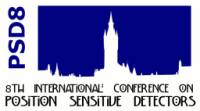Speaker
Alexander Dierlamm
(University of Karlsruhe)
Description
The LHC accelerator complex will undergo a program of consolidation and upgrade of various components, with goal of exceeding a peak luminosity of 1034 (original design figure) around the year 2013, to eventually reach values close to 1035. Such luminosity upgrade poses new challenges to the detector operation, both in terms of instantaneous and integrated rates. In CMS the system that have been identified to need substantial upgrade are the tracker and the level 1 trigger (other aspects are under study). The tracking system needs higher readout granularity and higher radiation tolerance, while moderating power dissipation and material budget, which are already limiting the performance of the present detector. The trigger system needs to include tracking information at the level 1, to maintain an acceptable rate without loosing efficiency on physics channels, which ultimately results in further challenges for the design of a new tracker detector and its readout architecture.
We give an overview of the options under study to design a tracker that can cope with the enhanced requirements for what concerns choices of silicon sensors, readout architecture, powering schemes, cooling technologies, detector layouts.
Author
Alexander Dierlamm
(University of Karlsruhe)

